News & Blogs
Universal Appeal of Rice Balls
The Art of Onigiri - To Grip or Not
From Snack to Delicacy - The Rise of Gourmet Onigiri
Global Flavors - Onigiri's Parisian Love Affair
The Secret Ingredient - Enhancing Onigiri with TREHA®
In this blog, we touch on diverse topics about Japanese food cultures, practices together with the culinary secret, TREHA®, and its important role in the Japanese food industry. We hope our blog helps you obtain in-depth knowledge of the secrets and science behind Japanese cuisine, shared from our kitchen, to yours.
Universal Appeal of Rice Balls
Are you acquainted with "Onigiri"? These traditional rice balls have been a household favorite for centuries in Japan. Recently, onigiri has been attracting global attention, leading to the emergence of specialized shops both in Japan and abroad. This article explores the evolution of onigiri in its homeland, showcasing its growing popularity. Understanding these trends may offer valuable insights for your creative endeavors.
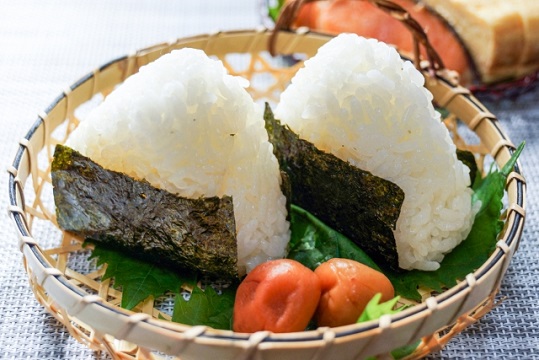
The Art of Onigiri: To Grip or Not
Onigiri, in its most basic form, involves gently molding salted cooked rice into shapes like triangles or cylinders. These rice balls often come with a filling and are wrapped in nori (seaweed) sheet, adding a layer of flavor and texture. Common fillings for their sour or salty flavors include pickled plum (umeboshi) or grilled salmon. Although onigiri shares some similarities with sushi regarding ingredients, it's distinct in shape and typically doesn't include raw fish.
Renowned for its portability and ease of eating on the go, onigiri has been a staple carry-along food in Japan for generations. Today, you can find it everywhere, from convenience stores to supermarkets across the country, showing just how popular it has become. Despite not achieving the same international fame as sushi, onigiri remains a deeply ingrained part of daily life in Japanese homes, cherished for its simplicity and comfort.
Onigiri, derived from "nigiru" meaning to clasp or shape with the hands, inspired the inventive "Onigirazu" or non-gripped rice balls. How are these made without the traditional shaping? It's surprisingly straightforward: start with a square nori sheet, add a layer of cooked rice, then your choice of fillings, another layer of rice, and finally fold the nori corners over the stack. This method doesn't require fully enclosing the fillings, allowing for diverse ingredients. Onigirazu, resembling a sandwich in its square shape, showcases a visually appealing cross-section when sliced, filled with vibrant and tasty ingredients, earning its popularity on social media. This modern take on rice balls has made a notable economic impact, leading to a surge in related recipe books and specialized nori sheets and gadgets designed for crafting Onigirazu.
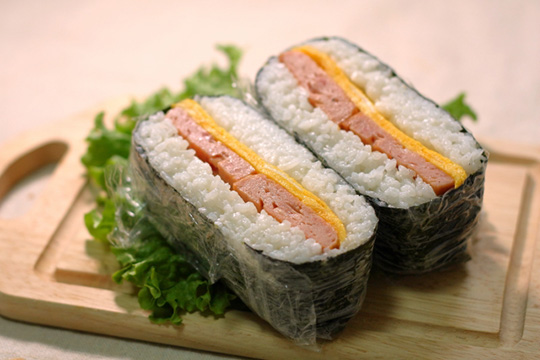
Snack to Gourmet: Onigiri's Evolution and Korean Cousin, "Jumeokbap"
In recent years, onigiri has been getting more attention in the dining-out sector, with an increase in specialty stores. A significant boost came in 2019 when an onigiri specialty shop in Asakusa, Tokyo, was featured in the Michelin Guide. This inclusion enhanced onigiri's status as a dining option in Japan and raised its profile worldwide, possibly leading to its premiumization. Onigiri shops have also started offering more variety in serving their rice balls. Now, customers can enjoy onigiri made fresh on-site, and some places let you pick from a wide range of fillings to make your custom onigiri. By incorporating interactive elements into this classic dish, onigiri has been transformed into a dining experience that's increasingly valued and enjoyed.
Onigiri has evolved to include more luxurious fillings, giving rise to "Gourmet Onigiri." In 2023, it was named "Dish of the Year" by the Gurunavi Research Institute Inc.*
*Gurunavi Research Institute Inc. is a Japanese firm which studies food trends and culture. Each year since 2014, the institute picks a dish that captures the spirit of the times, aiming to highlight and safeguard Japan's rich culinary heritage.
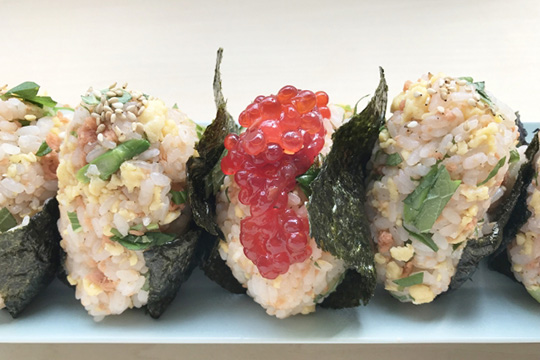
Onigiri is a Japanese home-cooked favorite, but we can also see “cousins” in other Asian countries, where the rice is the staple. “Jumeokbap” is the one from Korea, which is gaining popularity in Japan recently. “Jumeokbap” combines “jumeok” (fist) and “bap” (rice) to mean “fist rice” - it’s interesting how the food culture shows convergent evolution in each country. This traditional dish features seasoned rice mixed with pickles, vegetables, and Korean seaweed, shaped into bite-sized balls. The unique flavors of Korean seaweed and the tanginess from pickles cater well to the Japanese taste. Its presence in major Japanese convenience stores highlights its popularity and shows how it complements the Japanese love for onigiri.
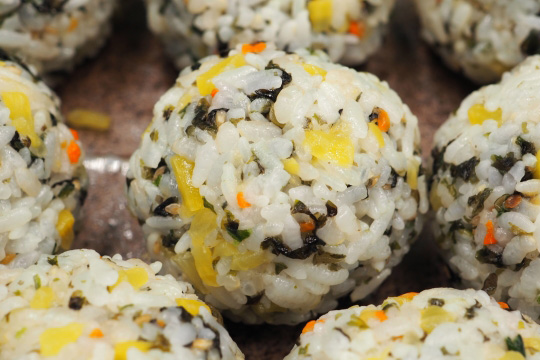
Onigiri and Beyond: A Glimpse of Japanese Culinary Trends in Paris
After exploring the onigiri trend in Japan, I'm excited to share firsthand insights from a recent business trip to France, where Japanese culinary influences are reshaping local dining.
As a culinary trendsetter, France often introduces styles and flavors that resonate across Western countries. Japanese cuisine, particularly onigiri, has found a surprising foothold here. In Paris, the emergence of onigiri specialty shops and their regular presence in supermarkets speaks volumes. With prices around three to four euros, these rice balls come with inventive fillings like salmon cream cheese and beef teriyaki, blending Japanese tradition with a touch of French flair. The playful use of onomatopoeic words, such as "Shaki-Shaki!" to describe the crisp nori, adds a delightful aspect to the onigiri experience, illustrating the universal language of food textures.
In a local Asian market, I encountered a novel onigiri wrap that keeps the nori crisp, reflecting an innovative marriage of tradition and convenience. This gadget is just one example of how onigiri adapts to modern lifestyles while maintaining its cultural essence.
Exploring onigiri's popularity led me to another Japanese classic poised for recognition: Inari Sushi (いなり寿司), or "Oinari-san." Known for its sweet and savory soybean curd pouches filled with sushi rice and seasoned vegetables, Inari Sushi's rise is buoyed by Parisians' appreciation for soy products. As this dish gains traction, it's intriguing to consider how it might evolve with a French twist, incorporating local tastes and ingredients.
The fusion of Japanese and French culinary traditions in Paris highlights the global appeal of Japanese cuisine and opens up exciting possibilities for future culinary innovations.
Discover more with @trehalose_madame on Instagram
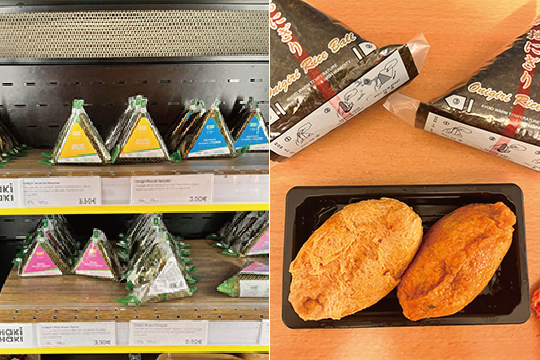
Right: Inari sushi sold at mochi patisseries is also a big hit.
Try TREHA® for Your Onigiri
I hope you enjoyed the onigiri story. Its simplicity makes onigiri versatile and easy to customize worldwide. Feel free to experiment with different variations.
To enhance your onigiri, consider using TREHA®. It's popular in Japan for keeping rice from hardening, ensuring it stays tasty and soft longer. Add TREHA® to rice after rinsing and soaking it, using 5% more water than usual. Ensure it's well mixed and dissolved.
TREHA ®benefits for cooked rice:
Cooked rice grains are fluffier
Gives cooked rice better luster, aroma and texture
Masks off-notes
Maintains the quality during frozen or chilled storage
Try adding TREHA® to your onigiri and notice the difference! Please feel free to contact us for the recipe or usage guide. Our team is happy to answer your questions.
Did you find this blog interesting?
Please share it with your friends in the food service industry.
We regularly update the blog about the food culture of Japan, where TREHA® was discovered for culinary applications.
Click here and send us a message to subscribe.
Or hit us up on Instagram @trehalose_sensei!
You might also be interested in:
Interview with Chef Hidenobu Meguro, the owner-chef of Yoroshiku Sushi in Inagi City, Tokyo, and one of Japan’s prestigious sushi masters. (Read the article)
Exclusive interview with Chef Andy Matsuda of Sushi Chef Institute in Torrance, California: #1 of 3, #2 of 3, #3 of 3
Mochi Expansion Beyond Ice Cream. (Read the article)
Learn more about how to use TREHA® in different services categories: Grab-and-Go, Delivery, Bakery and more.


